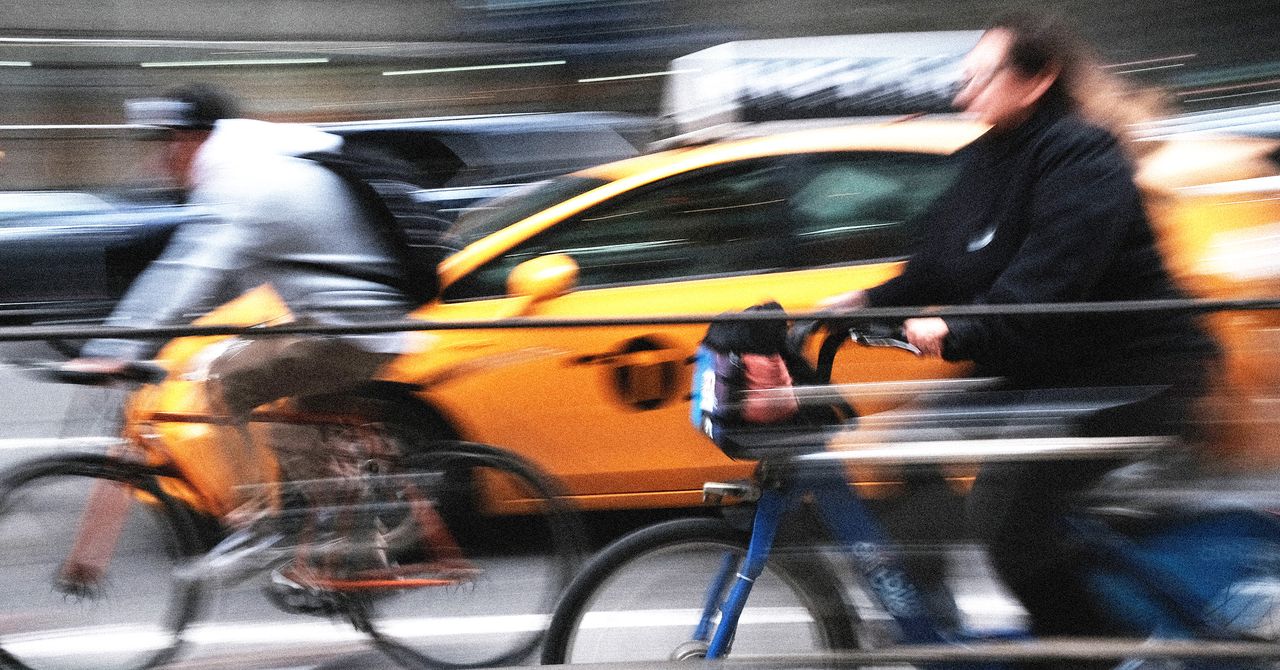How to Turn Cities Into Biketopias? Make it Harder to Drive There Leave a comment
A Queens-based bike courier who goes by the mononym of Quentin echoes Berlanga’s sentiment, noting how New York’s streets instantly really feel extra spacious than ever.
“These simply much more elbow room now,” Quentin says, admitting that a part of him misses the visitors, because the gridlock typically made his job extra thrilling. “The Avenues, particularly via Midtown, simply appear vast open, and you’ll inform there are such a lot of much less vehicles on the highway.”
Nevertheless it’s not solely couriers having fun with the Metropolis’s much less trafficked streets. Although town’s bike-sharing platform, CitiBike, has but to share ridership info from January, there merely look like extra folks on bikes than at comparable instances in years previous.
“Even on this unusually chilly winter, we’re seeing extra folks biking since congestion pricing took impact,” says Ken Podziba, director of the advocacy nonprofit Bike New York. “However the actual pleasure will include hotter climate, as we witness a dramatic shift—fewer vehicles and extra bikes filling town streets.”
To Podziba’s level, what may occur when the temperature ticks up? Will Manhattan instantly seem like Amsterdam, Copenhagen, Paris, or Oslo, the latter two of which not too long ago joined the development of centering bicycle transport of their city design? And if ridership skyrockets, will town take the lead from its legion of motorbike riders and implement extra and safer means for folks to traverse town through bike?
The primary metropolis that usually involves thoughts on the point out of an city biking middle is Amsterdam. Famend for its a whole lot of miles of motorbike lanes, its protected bike infrastructure, and its cycling-happy residents, a lot of whom journey throughout the metropolis nearly solely by bike, the Dutch capital is a world beacon for bicycle-centric city planning.
Nevertheless, what it’s possible you’ll not know is that the Dutch metropolis’s give attention to bicycling infrastructure is a comparatively current phenomenon.
In 1971, after a couple of a long time of postwar increase, 3,300 Amsterdammers have been killed in visitors accidents. 4 hundred of them have been youngsters. Within the aftermath of that bloody yr, a wide range of advocacy teams started staging citywide protests, fiercely opposing town’s rising dependence on vehicles and urging lawmakers to raised think about bicyclists and pedestrians. Serendipitously, a couple of years later, through the 1973 oil disaster that noticed the value of oil quadruple, the Dutch authorities shut down a number of metropolis streets on Sundays, urging residents to take pleasure in traffic-free motorways.
By the Nineteen Eighties, cities and cities throughout the Netherlands began to slowly introduce particular bicycle-only routes, which led to networks of city-wide bicycle paths. In the present day, the Netherlands counts some 30,000 miles of motorbike paths unfold throughout the nation’s 12,900 sq. miles, whereas greater than 1 / 4 of all journeys within the nation are made by bicycle.
Cyclists in Copenhagen, Denmark.{Photograph}: Jörg Carstensen/Getty Photos

